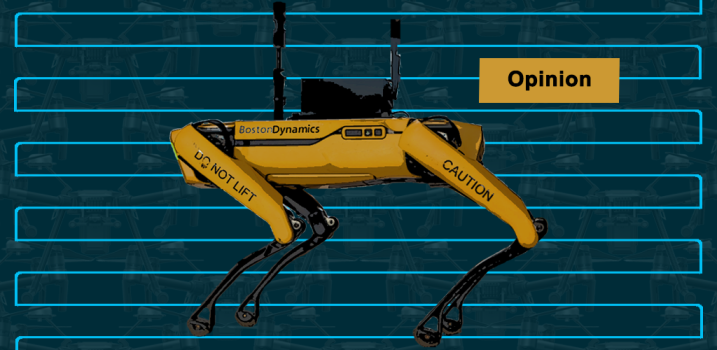K
Kathleen Martin
Guest
Over the past few years, the internet has closely followed along as Boston Dynamics’ Spot has more or less “grown up.” We’ve collectively watched in awe as Spot and its robotic predecessors learned to withstand a push or a shove, navigate dangerous terrains, and eventually dance like BTS.
For the general public, Spot’s robotic dance montages are what the robot is best known for. But is Spot more than a neat (albeit expensive) commercial toy? The commercial drone market provides one answer.
The Path to Drone Development In 2016, the analyst firm Gartner predicted that commercial UAVs were just barely rounding the corner of “peak inflated expectations”, with 5-10 years of development still to come before the technology reached mainstream adoption. By 2017, Gartner concluded that drones had effectively rounded the corner, with the adoption time frame essentially halving to 2-5 years.
Quite rapidly (though less publicly than the perception of ground robots), drones went from being freelance videographer toys and neighborhood nuisances to essential inspection tools for enterprise businesses like construction, energy and agriculture. The number of use cases for drones also grew as drone hardware became more advanced and reliable. Advanced aerial mapping, crop monitoring, public safety uses, disaster response, and consumer drone deliveries all seemed to be on the table as the drone industry matured.
Today, there are over 350,000 registered commercial drones in the U.S., with some of the largest fleets, such as that of agricultural giant Corteva, numbering in the hundreds. Adoption has been primarily driven by the various safety and efficiency benefits that drones provide to industrial jobsites.
These hundreds of thousands of drones are now conducting programmed crop scans, completing exterior building inspections, and performing thermal scans of solar farms with routine swiftness. They are keeping workers safely away from disaster areas or dangerous construction tasks (i.e., inspecting roofs, scaling scaffolding), saving time, resources and human well-being. However, the industry would not have gotten to this point without the help of advanced software solutions.
Continue reading: https://www.roboticsbusinessreview.com/opinion/what-is-the-future-of-robotics-the-commercial-drone-market-provides-one-answer/
For the general public, Spot’s robotic dance montages are what the robot is best known for. But is Spot more than a neat (albeit expensive) commercial toy? The commercial drone market provides one answer.
The Path to Drone Development In 2016, the analyst firm Gartner predicted that commercial UAVs were just barely rounding the corner of “peak inflated expectations”, with 5-10 years of development still to come before the technology reached mainstream adoption. By 2017, Gartner concluded that drones had effectively rounded the corner, with the adoption time frame essentially halving to 2-5 years.
Quite rapidly (though less publicly than the perception of ground robots), drones went from being freelance videographer toys and neighborhood nuisances to essential inspection tools for enterprise businesses like construction, energy and agriculture. The number of use cases for drones also grew as drone hardware became more advanced and reliable. Advanced aerial mapping, crop monitoring, public safety uses, disaster response, and consumer drone deliveries all seemed to be on the table as the drone industry matured.
Today, there are over 350,000 registered commercial drones in the U.S., with some of the largest fleets, such as that of agricultural giant Corteva, numbering in the hundreds. Adoption has been primarily driven by the various safety and efficiency benefits that drones provide to industrial jobsites.
These hundreds of thousands of drones are now conducting programmed crop scans, completing exterior building inspections, and performing thermal scans of solar farms with routine swiftness. They are keeping workers safely away from disaster areas or dangerous construction tasks (i.e., inspecting roofs, scaling scaffolding), saving time, resources and human well-being. However, the industry would not have gotten to this point without the help of advanced software solutions.
Continue reading: https://www.roboticsbusinessreview.com/opinion/what-is-the-future-of-robotics-the-commercial-drone-market-provides-one-answer/

